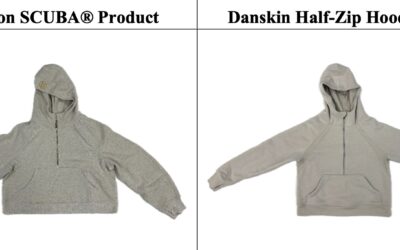The Katy Perry Trademark Battle
In the world of intellectual property law, few cases highlight the importance of trademark coexistence agreements quite like the recent dispute between pop superstar Katy Perry and Australian fashion designer Katie Jane Taylor (who designs under her birth name, Katie Perry).
The Long-Running Dispute
The legal battle between these two similarly-named entrepreneurs began in 2009 when Katy Perry’s management team first became aware of the Australian fashion designer’s use of the “Katie Perry” trademark for her clothing line. The pop star’s team sent a cease and desist letter, which sparked a legal conflict that would span over a decade.
What makes this case particularly interesting is that in 2009, after sending the initial cease and desist letter, Katy Perry actually offered a co-existence agreement to the Australian designer – a proposal that was rejected. This decision would ultimately prove costly for the designer.
The Court Rulings
In 2023, the Federal Court of Australia initially ruled in favor of the fashion designer, finding that Katy Perry and her company Kitty Purry had infringed on Taylor’s registered “Katie Perry” trademark for clothing. However, in a significant reversal, the Full Federal Court overturned this decision in November 2024.
The appeal court ordered that Taylor’s trademark be canceled on the grounds that Katy Perry had already established a significant international reputation before the designer filed for her trademark. The court recognized that consumers would likely be confused between the two brands, believing the designer’s products might be associated with the famous singer.
The judges acknowledged the unfortunate nature of the case, describing it as a situation where “two enterprising women in different countries each adopted their name as a trade mark at a time that each was unaware of the existence of the other.” For Taylor, the ruling was devastating – she expressed that she had “lost everything” after pursuing her fashion dream since 2006.
What Is a Trademark Co-existence Agreement?
A trademark co-existence agreement is a legal arrangement that allows two businesses with similar or identical trademarks to operate simultaneously in the marketplace under specific conditions designed to prevent consumer confusion.
These agreements typically specify:
- Geographic limitations (where each party can operate)
- Product or service restrictions (what each party can sell)
- Design requirements (how each trademark can be visually presented)
- Marketing guidelines (how each party can promote their brand)
Co-existence agreements are particularly useful when both parties have legitimate claims to similar marks and neither wants to endure the uncertainty, expense, and potential brand damage of protracted litigation.
Why a Co-existence Agreement Would Have Made Sense
In hindsight, the fashion designer’s rejection of Katy Perry’s co-existence offer appears to have been a costly strategic error. Here’s why accepting might have been wiser:
-
Preserved Business Continuity: Taylor could have continued operating her fashion business under negotiated terms rather than facing a complete rebrand after years of investment.
-
Avoided Lengthy Litigation Costs: The legal battle stretched over 15 years, requiring significant financial resources that a small fashion brand would struggle to sustain against a global entertainment company.
-
Potential Marketing Benefit: A carefully crafted agreement might have allowed the designer to benefit from the distinction while avoiding confusion.
-
Recognition of Reality: The court ultimately recognized the pop star’s earlier adoption and stronger reputation with the name. A co-existence agreement would have acknowledged this reality while protecting both parties’ interests.
The Full Court specifically criticized the designer’s decision not to entertain the co-existence arrangement, suggesting that such agreements are often “perfectly suitable commercial resolution[s] of a trademark dispute” in saturated brand markets.
Lessons for Business Owners
This case offers valuable lessons for entrepreneurs and business owners about trademark protection:
- Thoroughly research existing brands and trademarks before investing in your own
- Consider pragmatic solutions like co-existence when conflicts arise
- Understand that courts may favor parties with established reputation when confusion is likely
- Recognize that even when using your own name, trademark law ultimately aims to prevent consumer confusion
For Australian fashion designer Katie Taylor, what began as a dream of building a brand under her own name ended in a devastating legal defeat. The court’s decision means she must now rebrand her business entirely unless she successfully appeals to Australia’s High Court.
Meanwhile, for business owners everywhere, this case serves as a powerful reminder that sometimes in trademark disputes, co-existence isn’t just a compromise – it can be the winning strategy.
This article is based on publicly available information about the trademark dispute between Katy Perry and Katie Perry. It is intended for informational purposes only and should not be considered legal advice.




